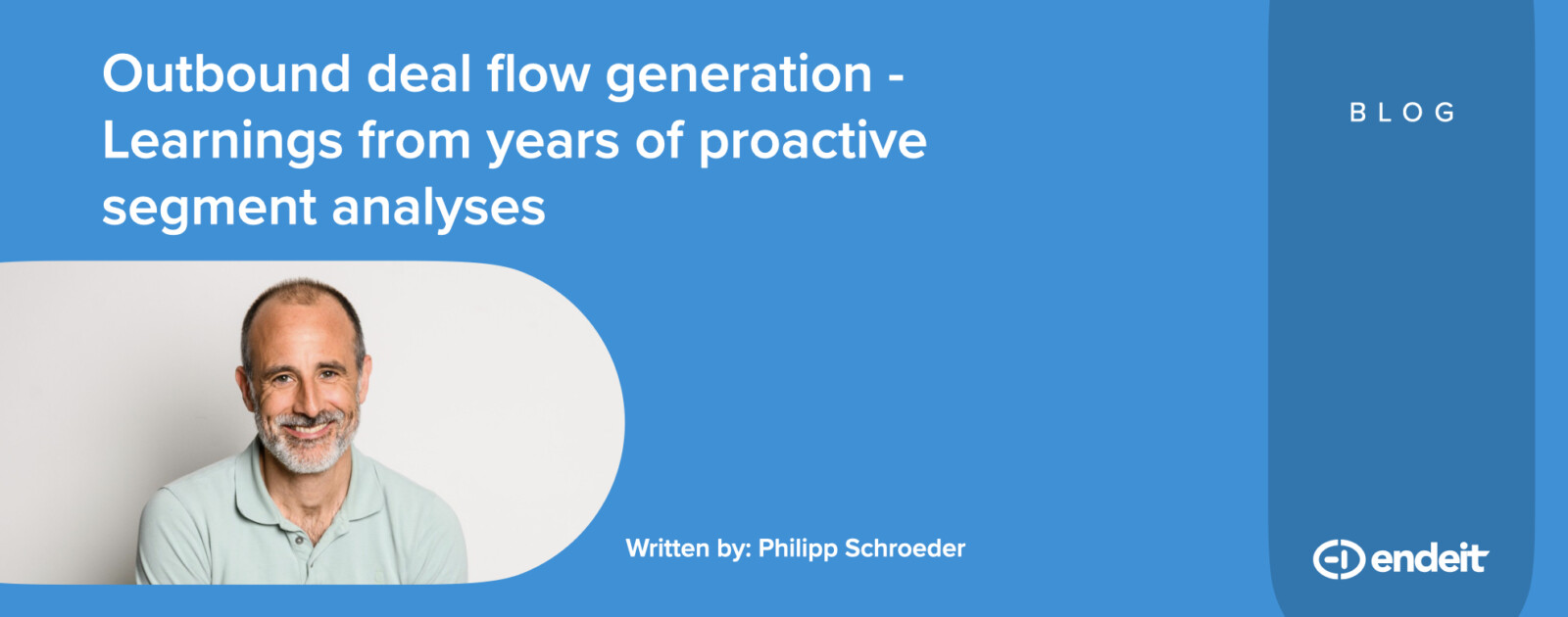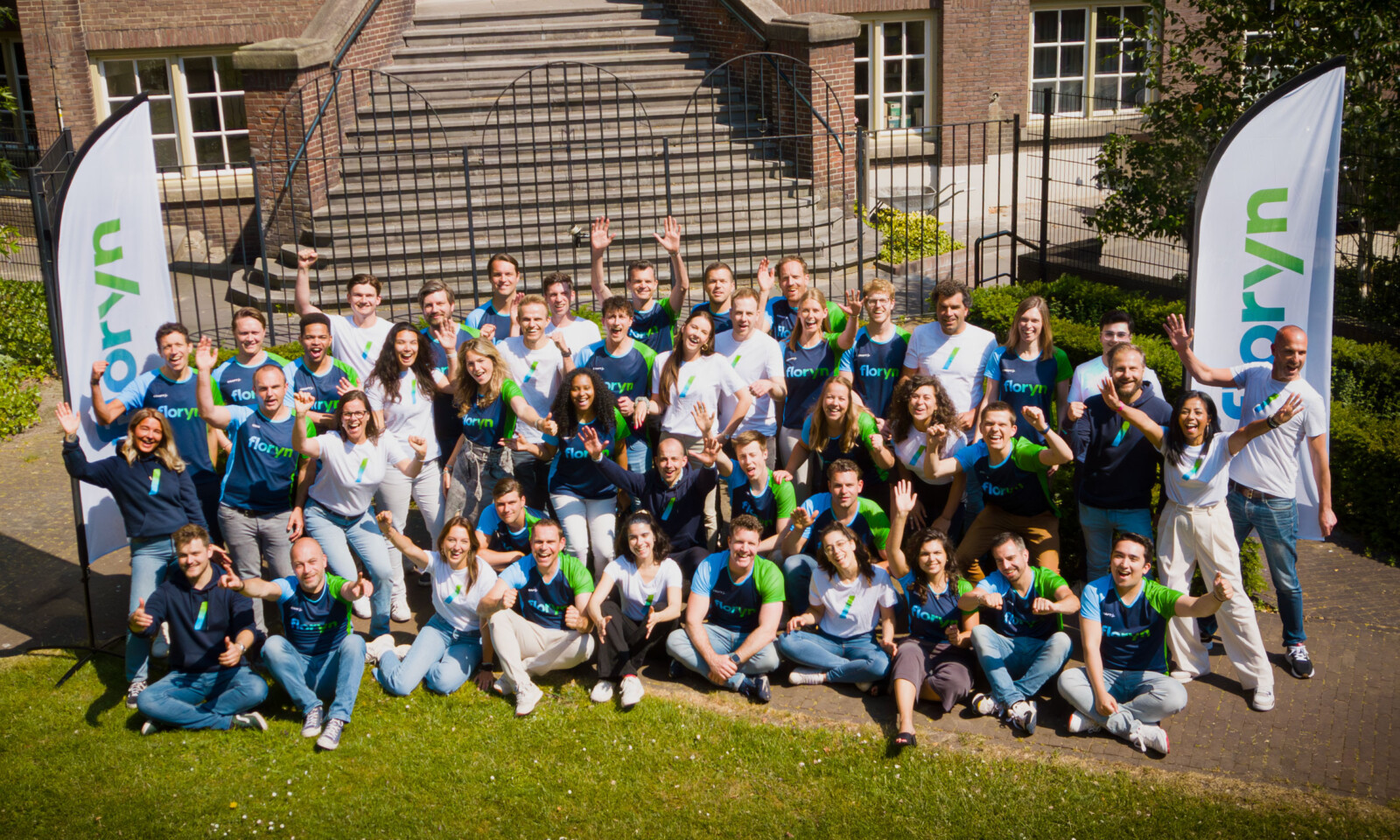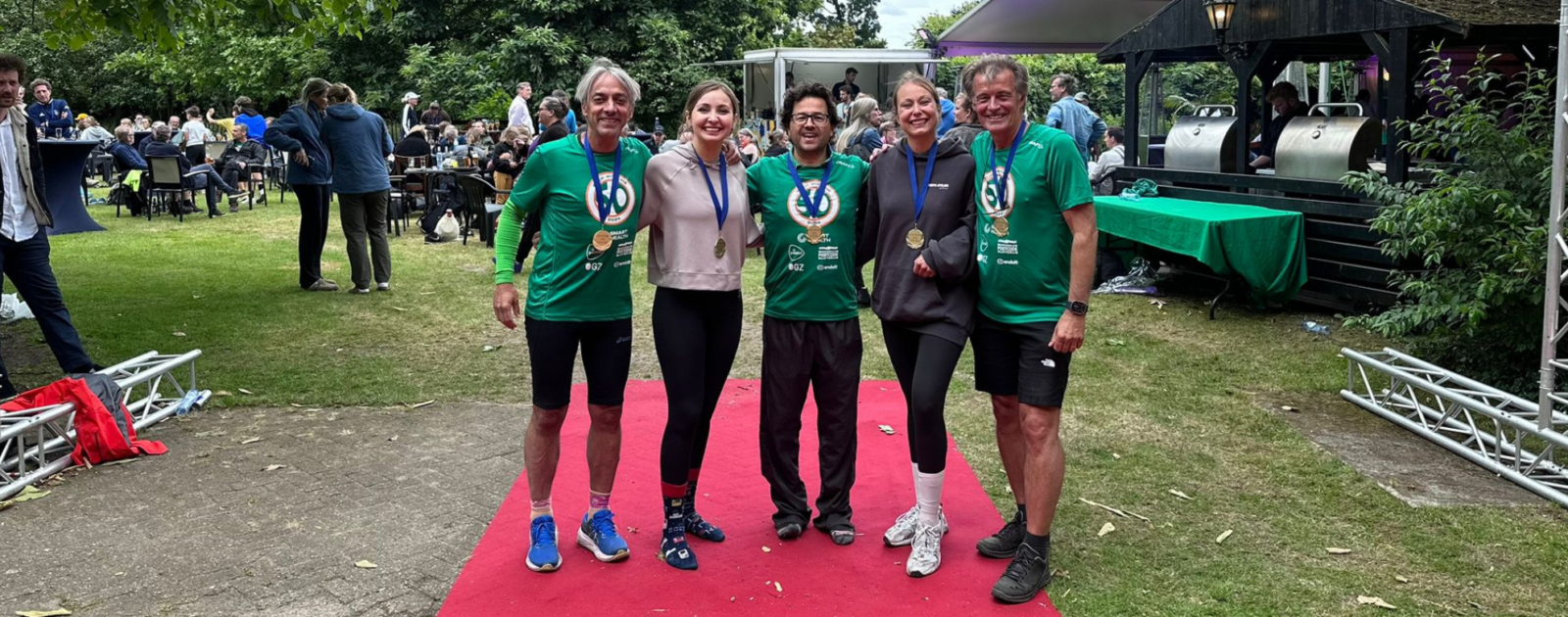“I investigate different business models and dynamic environments. I am learning all the time.”
Outbound deal flow generation – Philipp Schroeder’s learnings from years of proactive segment analyses

A few weeks ago, I was in Berlin and met one of my VC Buddies, who has been in the industry for a long time as well. Upon asking one another – how things are going – we looked into each other’s eyes and thought the same: “Never boring, always dynamic, always changing, always challenging.” I am super curious, and I believe that is why I love this industry so much. I investigate different business models and dynamic environments. I am learning all the time. Also, I love the fact that the founders don’t accept the status quo and continuously head for disruption.
Furthermore, our Venture Capital (VC) industry is changing all the time as well. I was there in the Dot.com bubble when it burst, the rise of Tech again, and the fall during the financial crisis. Then, after more or less 10 years of growth – almost a cardiac arrest when COVID popped up.
For two months, I thought: “Is our portfolio going to go bust?” But thankfully, the answer was NO. It was the other way around. The following 2 years, a Tech Bonanza, Wild Wild West, Massive Exits (my Active Venture Partners’ portfolio company Adjust being sold to AppLovin for reportedly $1bn), Gigantic Funds, large funding rounds (ParcelLab Series B $112m funding round), and now 1 ½ years of RESACA (Spanish word for hangover) disappointment, realism striking back. You can say these are tough times.
When interest rates fall again, and liquidity flows back from bonds to public equities fueled by disruption through AI (Artificial Intelligence), I believe that the markets will be quite different again in 6-12 months.
What does that have to do with proactive deal flow?– our segment approach
As a VC, you must react to market changes, as our portfolio companies do constantly in their dynamic environments. Historically, VCs profited from inbound leads as there weren’t many funds out there. We had time to liaise with founders, build relationships, and monitor developments. Throughout the past 5 years and for the coming years, this will be different (and maybe forever). There is an abundance of cash and dry powder, there are more funds looking for “THE” deal than there are quality deals out there. You can say it is more fierce competition.
Several years ago, we noticed the trend towards outbound deal sourcing at Endeit, and even though we worked on a clear positioning and had a pretty sharp investment strategy, we had to do more. Inbound wasn’t sufficient anymore, so we had to put even more emphasis on outbound “sales” (i.e., contacting founders proactively) compared to the years before. We launched a more refined segment approach.
I want to share what we learned when carrying out the segment approach.
Defining the segments
First, you must define which focus areas or industries we call segments to go for (e.g., Future of Work, Climate Tech, etc.). So, we did a thorough analysis of future trends, growth, market sizes, where those segments stand within the hype cycle, etc. The biggest struggle here was about definitions, what business model falls into which segment, and selecting the segments, i.e., having to say no to others.
Which segments to prioritize?
We looked at our DNA – specific knowledge and competencies of the team (scaling know-how, internationalization, M&A, buy & build), operative experience in segments (like Fintech, Supply Chain, Media), those of our LPs (we have >70 entrepreneurs invested in our fund with a background in Cybersecurity, Insurtech, Future of Work, etc.), investment experience (e.g. Future of Work with Lepaya, Happeo and Sharpist), access to potential acquirers (we carried out many exits to publicly quoted companies), favorable market insights, etc.
After selecting segments – the first internal presentation – Oh! Hm, I expected….
When doing the analysis, we were baffled by the complexity of the segments. Each segment can probably be categorized in 20 subsegments and then in 20 sub/subsegments and then in…Each segment for itself is huge. When we did the first internal presentation, the feedback was mixed. There were happy and disappointed faces. People were impressed by the vast amount of business models within the segment; however, they were missing the next step. Which companies should you go for, out of a couple of hundred or thousands? Our ambitious idea was that we would be able to compare various players with exactly the same business model, compare teams, KPIs, traction, etc., and then go for the best. But how on earth can we do that for these amounts of business models?
Ok – let’s go for subsegments
Even though we dug deeper into a subsegment, we realized that we were still comparing apples with pears when looking at all the companies. It was still difficult to match our objective to invest in the best of a specific business model with the data we had. Again, it was eye-opening and frustrating at the same time.
Ok – let’s go for business models
Again, the big question. Which business model to go for? Why this one and not the other? Endless nights of discussions. Endless nights of analysis. Why blue-collar focus and not white-collar in the segment Future of Work? Why SDR automation vs CRM tools in the segment Sales Tech? Pros and cons. Again, there is a similarity to our portfolio companies. We constantly remind the founders to stay focused and have the guts to say “No” to many opportunities. We did the same, we took decisions, disregarded or parked specific business models/segments and executed the ones we believed in.
Business Model sprints – creating a multi-disciplinary task force
Upon selecting certain segments and having done various subsegment analyses as well as business model analyses, we realized that certain segments might be smaller – in terms of investable companies and the required traction that we need as a growth investor. Therefore, we built a task force to support other segment leaders in business model sprints when they were overloaded with their work.
To conclude: Where are we now in terms of the outbound segment approach?
At this point, we are doing okay, but we must stay focused. We have built a solid pipeline of deals, established relationships with founders early on, got a good understanding of business models, peculiarities of industries, and we can compare apples with apples. We realize, though, that we opted for future trends and that some companies are super promising but still small as this is all relatively new. So, we need a bit more patience as a Series A+/Series B investor.
Ancillary work to support the segment approach– segment experts, segment dinners, segment content
In my next blog post I will share my learnings about the work we performed to support our segment approach. Identifying segment experts that help us with the analysis of companies, providing essential intel from the market about business models, founders, and more. For example, organizing segment dinners with experts, entrepreneurs, and thought leaders and being recognized by founders for our specific industry expertise and, therefore, winning deals. Stay tuned.
Written by Philipp Schroeder

